After building several solid state amplifiers, I stared reading about vacuum tube amplifiers. I already knew that the technology is really outdated and no matter how much we try with tubes, transistors will always measure and sound better. I'm an electronics engineer so I do not really buy into the "tube sound" thing. But nevertheless, I was curios to learn more about these devices from the past and I started reading some books and articles (Morgan Jones and others). As I was reading I stared having an itch to actually build one. As I was reading more and more, the itch became unbearable. I then decided that I must design and build one tube amp. The entire process I went through can be seen here (https://www.audiosciencereview.com/...g-a-valve-amplifier.29903/page-4#post-1385454) . I will not go through the entire process, I just want to make a separate thread with the final measurements of the amplifier. The staring point of the project was the design by Bob Cordell (C70) that was published on Linear Audio. I decided to use new tubes (JJ) and new toroidal transformers (Toroidy from Poland). The final amplifier has a maximum output power of about 2x 20W. I also added a milliamp meter so that I can measure the current going through the KT88s.
The final stage of the amplifier is in pentode mode. I designed the amp so that I can test UL mode as well.
I have a QA401 that I used for measurements. The setup was pretty straight forward. QA401 output -> Power amp -> QA401 input. I used a resistive load of 8OHMs made out of 50W wirewound power resistors.
I will start with the usual measurements:
1W into 8OHMs:

5W into 8OHMs:

Multitone (QA401 software is not that good for multitone. It can't increase/decrease the level of the signal):

Frequency response for the 8OHM tap:

THD at 1W and 5kHz

THD at 1W and 10kHz

THD at 1W and 20kHz

THD at 1W at 50Hz

Some IMD measurements:



Now 1W into 8OHMs in UL mode:

I have to say that the measurements were a lot better than what I was expecting. Having a THD+N of 77dB at 1W is really good in my opinion. Most of my listening happens at 1W or below. I know that there are solid state amplifier that measure a lot better but I must say that I was pleasantly surprised by the results. The only "bad" thing is that UL mode measures a lot worse than pentode. This means that the finished amp will stay in pentode mode. I also have to say that I worked a lot on the amp to make it stable (thanks to @SIY and other forum members ) and I saw only measurements until it was almost done. I only stared listening to the thing a month ago or so. From the listening point of view I have to say that it sounds pretty well (as expected from the measurements). I did not have the chance to listen to it in UL mode as it was already setup for pentode mode as UL had significantly worse results. Attached a few pictures with the amp itself. I think it came out really ok . Next I will post similar measurements with my solid state integrated amplifier but only after I solve some pesky ground loops inside the amp
. Next I will post similar measurements with my solid state integrated amplifier but only after I solve some pesky ground loops inside the amp  .
.
The final stage of the amplifier is in pentode mode. I designed the amp so that I can test UL mode as well.
I have a QA401 that I used for measurements. The setup was pretty straight forward. QA401 output -> Power amp -> QA401 input. I used a resistive load of 8OHMs made out of 50W wirewound power resistors.
I will start with the usual measurements:
1W into 8OHMs:
5W into 8OHMs:
Multitone (QA401 software is not that good for multitone. It can't increase/decrease the level of the signal):
Frequency response for the 8OHM tap:
THD at 1W and 5kHz
THD at 1W and 10kHz
THD at 1W and 20kHz
THD at 1W at 50Hz
Some IMD measurements:
Now 1W into 8OHMs in UL mode:
I have to say that the measurements were a lot better than what I was expecting. Having a THD+N of 77dB at 1W is really good in my opinion. Most of my listening happens at 1W or below. I know that there are solid state amplifier that measure a lot better but I must say that I was pleasantly surprised by the results. The only "bad" thing is that UL mode measures a lot worse than pentode. This means that the finished amp will stay in pentode mode. I also have to say that I worked a lot on the amp to make it stable (thanks to @SIY and other forum members ) and I saw only measurements until it was almost done. I only stared listening to the thing a month ago or so. From the listening point of view I have to say that it sounds pretty well (as expected from the measurements). I did not have the chance to listen to it in UL mode as it was already setup for pentode mode as UL had significantly worse results. Attached a few pictures with the amp itself. I think it came out really ok
 .
.Attachments
-
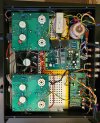 20221007_113803_resized.jpg726.8 KB · Views: 258
20221007_113803_resized.jpg726.8 KB · Views: 258 -
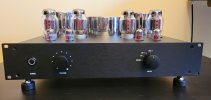 20221007_114422_resized.jpg521.1 KB · Views: 248
20221007_114422_resized.jpg521.1 KB · Views: 248 -
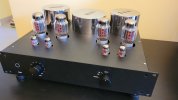 20221007_114427_resized.jpg651.9 KB · Views: 229
20221007_114427_resized.jpg651.9 KB · Views: 229 -
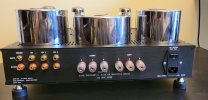 20221007_114448_resized.jpg525.8 KB · Views: 220
20221007_114448_resized.jpg525.8 KB · Views: 220 -
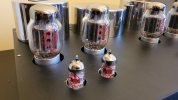 20221007_114516_resized.jpg655.5 KB · Views: 244
20221007_114516_resized.jpg655.5 KB · Views: 244 -
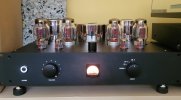 20221119_151834.jpg163 KB · Views: 240
20221119_151834.jpg163 KB · Views: 240 -
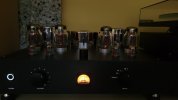 20221119_151848.jpg99.9 KB · Views: 242
20221119_151848.jpg99.9 KB · Views: 242 -
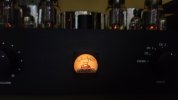 20221119_151902.jpg80.3 KB · Views: 210
20221119_151902.jpg80.3 KB · Views: 210